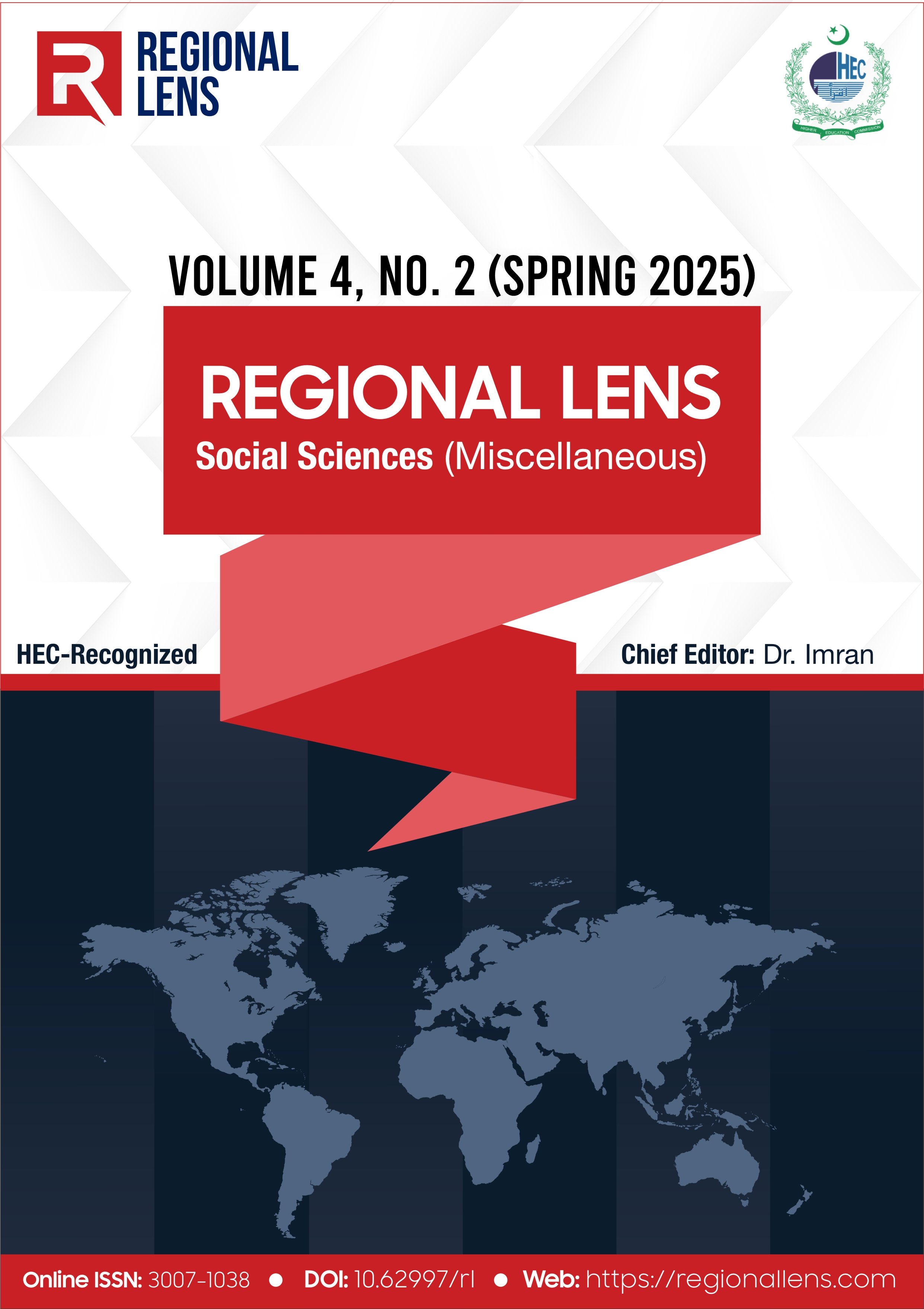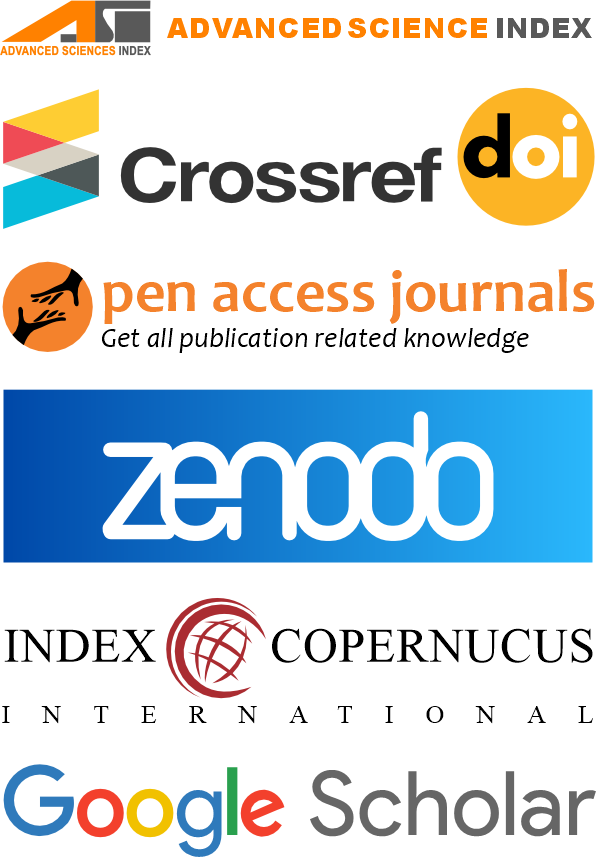An Integrated Framework for Interprovincial Water Conflicts (IFIWC): A Case of Punjab and Sindh Water Conflicts in Pakistan
DOI:
https://doi.org/10.62997/rl.2025.42074Keywords:
Agent-Based Modeling (ABM), Hydro Hegemony, Socio-Hydrology, Conflict Analysis Framework, Punjab Sindh Water Conflict, Interprovincial Water ConflictAbstract
Existing frameworks for analyzing water conflicts often fail to capture the dynamic feedback among climate variability, power asymmetries, and diverse stakeholder behaviours, especially within intrastate contexts. This study proposes an Integrated Framework for Interprovincial Water Conflicts (IFIWC) in Pakistan to address the longstanding dispute between Punjab and Sindh provinces under escalating climate change pressures. Building on key insights from hydro-hegemony, political ecology, and environmental security approaches, the framework interlinks conflict profiling, causal drivers, actor analysis, and conflict dynamics. Notably, it incorporates an Agent-Based Modeling (ABM) approach to simulate emergent negotiation patterns and collective decision-making processes among competing provincial and societal actors. Furthermore, the framework embeds climate feedback loops, recognizing that climate change both amplifies and is influenced by conflict dynamics. Together, these elements provide a robust conceptual and practical basis for modelling water allocation scenarios and evaluating adaptive governance strategies for the Indus Basin. This approach offers new insights for policymakers and researchers seeking to manage interprovincial water disputes in an era of increasing climate stress.
References
Allan, J. T., & Mirumachi, N. (2013). Why negotiate? Asymmetric endowments, asymmetric power and the invisible nexus of water, trade and power that brings apparent water security. In Transboundary Water Management (pp. 26-39). Routledge.
Almeida, J., Costa, C., & Nunes da Silva, F. (2017). A framework for conflict analysis in spatial planning for tourism. Tourism Management Perspectives, 24, 94-106. https://doi.org/https://doi.org/10.1016/j.tmp.2017.07.021
Archer, D. R., Forsythe, N., Fowler, H. J., & Shah, S. M. (2010). Sustainability of water resources management in the Indus Basin under changing climatic and socio economic conditions. Hydrol. Earth Syst. Sci., 14(8), 1669-1680. https://doi.org/10.5194/hess-14-1669-2010
Bandyopadhyay, J. (2015). Book review: Islam, Shafiqul and Susskind, Lawrence E. 2013: Water Diplomacy: A Negotiated Approach To Managing Complex Water Networks. Progress in Development Studies, 15(1), 102-104. https://doi.org/10.1177/1464993414547984
Barki, H., & Hartwick, J. (2004). Conceptualizing the construct of interpersonal conflict. International journal of conflict management, 15(3), 216–244. https://doi.org/10.1108/eb022913
Becker, N. (1996). Reallocating water resources in the Middle East through market mechanisms. International journal of water resources development, 12(1), 17-32. https://doi.org/10.1080/713672191
Ding, N., Erfani, R., Mokhtar, H., & Erfani, T. (2016). Agent based modelling for water resource allocation in the transboundary Nile River. Water, 8(4), 139. https://doi.org/10.3390/w8040139
Espey, M., & Towfique, B. (2004). International bilateral water treaty formation. Water Resources Research, 40(5). https://doi.org/10.1029/2003wr002534
Farooq, B. (2014). politics of Water in Pakistan. Pakistan Journal of Social Sciences (PJSS), 34(1).
Feitelson, E. (2000). The ebb and flow of Arab–Israeli water conflicts:: are past confrontations likely to resurface? Water Policy, 2(4), 343-363. https://doi.org/https://doi.org/10.1016/S1366-7017(00)00009-X
Feitelson, E., & Tubi, A. (2017). A main driver or an intermediate variable? Climate change, water and security in the Middle East. Global Environmental Change, 44, 39-48. https://doi.org/https://doi.org/10.1016/j.gloenvcha.2017.03.001
Fisher, S. (2000). Working with conflict: Skills and strategies for action. Zed books.
Gain, A. K., Sarwar, H., David, B., Giuliano, D. B., Carlo, G., & and Huq, N. (2021). Social-ecological system approaches for water resources management. International Journal of Sustainable Development & World Ecology, 28(2), 109-124. https://doi.org/10.1080/13504509.2020.1780647
Harou, J. J., Pulido-Velazquez, M., Rosenberg, D. E., Medellín-Azuara, J., Lund, J. R., & Howitt, R. E. (2009). Hydro-economic models: concepts, design, applications, and future prospects. Journal of Hydrology. https://doi.org/10.1016/j.jhydrol.2009.06.037
Hasan, F. u., Fatima, B., & Ashraf, M. (2021). Challenges to Irrigated Crop Zones of Punjab and Sindh Provinces in the Wake of Climate Variability. International Journal of Environmental Sciences & Natural Resources, 27. https://doi.org/10.19080/IJESNR.2021.27.556207
Herbert, S. (2017). Conflict analysis: Topic guide. Birmingham: University of Birmingham.
Hipel, K. W., & Walker, S. B. (2011). Conflict analysis in environmental management. Environmetrics, 22(3), 279-293. https://doi.org/10.1002/env.1048
Homer-Dixon, T. F. (1991). On the threshold: environmental changes as causes of acute conflict. International security, 16(2), 76-116. https://doi.org/10.2307/2539061
Huber, L., Bahro, N., Leitinger, G., Tappeiner, U., & Strasser, U. (2019). Agent-Based Modelling of a Coupled Water Demand and Supply System at the Catchment Scale. Sustainability, 11(21), 6178. https://www.mdpi.com/2071-1050/11/21/6178
Ide, T. (2018). Climate war in the middle east? Drought, the Syrian civil war and the state of climate-conflict research. Current Climate Change Reports, 4(4), 347–354. https://doi.org/10.1007/s40641-018-0115-0
Ide, T., Brzoska, M., Donges, J. F., & Schleussner, C.-F. (2020). Multi-method evidence for when and how climate-related disasters contribute to armed conflict risk. Global Environmental Change: Human and Policy Dimensions, 62(102063), 102063. https://doi.org/10.1016/j.gloenvcha.2020.102063
Ide, T., Lopez, M. R., Fröhlich, C., & Scheffran, J. (2021). Pathways to water conflict during drought in the MENA region. Journal of Peace Research, 58(3), 568–582. https://doi.org/10.1177/0022343320910777
Kåresdotter, E., Destouni, G., Lammers, R. B., Keskinen, M., Pan, H., & Kalantari, Z. (2025). Water conflicts under climate change: Research gaps and priorities. Ambio, 54(4), 618-631. https://doi.org/10.1007/s13280-024-02111-7
Kasymov, S. (2011). Water Resource Disputes: Conflict And Cooperation In Drainage Basins. International Journal on World Peace, 28(3), 81-110. www.jstor.org/stable/23266720
Khalid, I., & Begum, I. (2013). Hydro Politics in Pakistan: Perceptions and Misperceptions. A Research Journal of South Asian Studies, 28(1, January-June).
Khan, A. H. (2014). Water Sharing Dispute in Pakistan: Standpoint of Provinces. Berkeley Journal of Social Sciences, 4, Spring, 1-17.
Khan, H. F., Yang, Y. C. E., Xie, H., & Ringler, C. (2017). A coupled modeling framework for sustainable watershed management in transboundary river basins. Hydrology and Earth System Sciences, 21(12), 6275–6288. https://doi.org/10.5194/hess-21-6275-2017
Khan, M. N. (2016). Review of the decline in freshwater natural resources and future of inland fisheries and aquaculture: threatened livelihood and food security in Indus Valley, Pakistan. In Freshwater, Fish and the Future: Proceedings of the Global Cross-Sectoral Conference (pp. 211-218).
Lee, D., & Dinar, A. (1996). Integrated models of river basin planning, development, and management. Water International, 21(4), 213–222. https://doi.org/10.1080/02508069608686517
Lillo-Saavedra, M., Velásquez-Cisterna, P., García-Pedrero, Á., Salgado-Vargas, M., Rivera, D., Cisterna-Roa, V., Somos-Valenzuela, M., Boumahdi, M., & Gonzalo-Martín, C. (2024). Socio-Hydrological Agent-Based Modeling as a Framework for Analyzing Conflicts Within Water User Organizations. Water, 16(22), 3321. https://www.mdpi.com/2073-4441/16/22/3321
Link, P. M., Scheffran, J., & Ide, T. (2016). Conflict and cooperation in the water‐security nexus: a global comparative analysis of river basins under climate change: Conflict and cooperation in the water-security nexus. WIREs. Water, 3(4), 495–515. https://doi.org/10.1002/wat2.1151
Link, P. M., Scheffran, J., & Ide, T. (2016a). Conflict and cooperation in the water-security nexus: a global comparative analysis of river basins under climate change. Wiley Interdisciplinary Reviews: Water, 3(4), 495-515. https://doi.org/https://doi.org/10.1002/wat2.1151
Link, P. M., Scheffran, J., & Ide, T. (2016b). Conflict and cooperation in the water-security nexus: a global comparative analysis of river basins under climate change: Conflict and cooperation in the water-security nexus. Wiley Interdisciplinary Reviews: Water, 3(4), 495-515. https://doi.org/10.1002/wat2.1151
Madani, K. (2010). Game theory and water resources. Journal of Hydrology, 381(3–4), 225–238. https://doi.org/10.1016/j.jhydrol.2009.11.045
Magsi, H., & Atif, S. (2012). Water management, impacts and conflicts: Case of indus water distribution in Sindh, Pakistan. International Journal of Rural Studies, 19(2), 3-7.
Mason, M., & Zeitoun, M. (2013). Questioning environmental security. The Geographical Journal, 179(4), 294-297. https://doi.org/10.1111/geoj.12030
Maxwell, J. W., & Reuveny, R. (2005). Continuing conflict. Journal of Economic Behavior & Organization, 58(1), 30-52.
Medzini, A. (2001). The river Jordan: Frontiers and water. SOAS Water Research Group of the School of Oriental and African Studies, University of London.
Mobeen, M., Kabir, K. H., Schneider, U. A., Ahmed, T., & Scheffran, J. (2023). Sustainable livelihood capital and climate change adaptation in Pakistan's agriculture: Structural equation modeling analysis in the VIABLE framework. Heliyon, 9(11), e20818. https://doi.org/https://doi.org/10.1016/j.heliyon.2023.e20818
Mobeen, M., Kabir, K. H., Schneider, U. A., Ahmed, T., & Scheffran, J. (2025). Climate change perception, adaptation, and constraints in irrigated agriculture in Punjab and Sindh, Pakistan. Mitigation and Adaptation Strategies for Global Change, 30(4), 23. https://doi.org/10.1007/s11027-025-10212-1
Muhammad, A., Haider, B., & Ahmad, Z. (2016). IoT Enabled Analysis of Irrigation Rosters in the Indus Basin Irrigation System. Procedia Engineering, 154, 229-235. https://doi.org/https://doi.org/10.1016/j.proeng.2016.07.457
Mustafa, D. (2007). Social Construction of Hydropolitics: The Geographical Scales of Water and Security in the Indus Basin. Geographical Review, 97(4), 484-501. https://doi.org/10.1111/j.1931-0846.2007.tb00408.x
Mustafa, D., & Qazi, M. U. (2007). Transition from Karez to Tubewell Irrigation: Development, Modernization, and Social Capital in Balochistan, Pakistan. World Development, 35(10), 1796-1813. https://doi.org/https://doi.org/10.1016/j.worlddev.2007.06.002
Mustafa, D., Akhter, M., & Nasrallah, N. (2013). Understanding Pakistan's water-security nexus. http://site.ebrary.com/id/10716525
Naff, T., & Matson, R. (1984). Water in the Middle East. Cooperation or conflict. Routledge. https://doi.org/10.4324/9780429267284
Ovink, I. B. H. (2016). The Multi-track Water Diplomacy Framework.
Palijo, R. B. (2003). Sindh-Punjab Water Dispute 1859-2003. (Copyright © www.panhwar.com)
Priscoli, J. D., & Wolf, A. T. (2009). Managing and transforming water conflicts. Cambridge University Press.
Rajah, J. K., Atkins, A. E. P., Tang, C., Bax, K., Wilkerson, B., Fernald, A. G., & Langarudi, S. P. (2024). Understanding Hydrologic, Human, and Climate System Feedback Loops: Results of a Participatory Modeling Workshop. Water, 16(3), 396. https://www.mdpi.com/2073-4441/16/3/396
Ranjan, A. (2012). Inter-Provincial Water Sharing Conflicts in Pakistan. Pakistaniaat: A Journal of Pakistan Studies, 4(2), 102-122.
Sayal, E. A. (2015). Water MAnagement Issues of Pakistan
Scheffran, J., & Battaglini, A. (2011). Climate and conflicts: the security risks of global warming. Regional Environmental Change, 11(S1), 27–39. https://doi.org/10.1007/s10113-010-0175-8
Schill, C., Anderies, J. M., Lindahl, T., Folke, C., Polasky, S., Cárdenas, J. C., Crépin, A. S., Janssen, M. A., Norberg, J., & Schlüter, M. (2019). A more dynamic understanding of human behaviour for the Anthropocene. Nature Sustainability. https://doi.org/10.1038/s41893-019-0419-7
Shmueli, D. F., Kaufman, S., & Ozawa, C. (2008). Mining negotiation theory for planning insights. Journal of Planning Education and Research, 27(3), 359–364. https://doi.org/10.1177/0739456x07311074
Sivapalan, M., Konar, M., Srinivasan, V., Chhatre, A., Wutich, A., Scott, C. A., Wescoat, J. L., & Rodríguez-Iturbe, I. (2014). Socio-hydrology: Use-inspired water sustainability science for the Anthropocene. Earth's Future, 2(4), 225-230. https://doi.org/https://doi.org/10.1002/2013EF000164
Sivapalan, M., Savenije, H. H. G., & Blöschl, G. (2012). Socio-hydrology: A new science of people and water. Hydrological Processes, 26(8), 1270-1276. https://doi.org/https://doi.org/10.1002/hyp.8426
Tayia, A. (2019). Transboundary Water Conflict Resolution Mechanisms: Substitutes or Complements. Water, 11(7), 1337. https://www.mdpi.com/2073-4441/11/7/1337
Unfried, K., Kis-Katos, K., & Poser, T. (2022). Water scarcity and social conflict. Journal of Environmental Economics and Management, 113(102633), 102633. https://doi.org/10.1016/j.jeem.2022.102633
Warner, J. (1992). The Politics of Diversion Bridging troubled water in the Middle East University of Amsterdam, Amsterdam,]. Netherlands.
Wei, Y., Wei, J., Li, G., Wu, S., Yu, D., Ghoreishi, M., Lu, Y., Souza, F. A. A., Sivapalan, M., & Tian, F. (2022). A socio-hydrological framework for understanding conflict and cooperation with respect to transboundary rivers. Hydrol. Earth Syst. Sci., 26(8), 2131-2146. https://doi.org/10.5194/hess-26-2131-2022
Williams, P. (2002). Nile co-operation through hydro- realpolitik ? Third World Quarterly, 23(6), 1189-1196. https://doi.org/10.1080/0143659022000036577
Wolf, A. T., Yoffe, S. B., & Giordano, M. (2003). International waters: identifying basins at risk. Water Policy, 5(1), 29-60. https://doi.org/10.2166/wp.2003.0002
Xia, Q., Qian, C., Du, D., & Zhang, Y. (2021). Conflict or cooperation? How does precipitation change affect transboundary hydropolitics? Journal of Water and Climate Change, 12(5), 1930–1943. https://doi.org/10.2166/wcc.2021.280
Xu, H., Li, K. W., Hipel, K. W., & Kilgour, D. M. (2009). A matrix approach to status quo analysis in the graph model for conflict resolution. Applied Mathematics and Computation, 212(2), 470-480. https://doi.org/https://doi.org/10.1016/j.amc.2009.02.051
Yu, Y., Tang, P., Zhao, J., Liu, B., & Mclaughlin, D. (2019). Evolutionary cooperation in transboundary river basins. Water Resources Research, 55(11), 9977–9994. https://doi.org/10.1029/2019wr025608
Zeitoun, M., & Warner, J. (2006). Hydro-hegemony – a framework for analysis of trans-boundary water conflicts. Water Policy, 8(5), 435-460. https://doi.org/10.2166/wp.2006.054
Zeitoun, M., Mirumachi, N., Warner, J., Kirkegaard, M., & Cascão, A. (2019). Analysis for water conflict transformation. Water International, 1-20. https://doi.org/10.1080/02508060.2019.1607479
Zhu, T., Ringler, C., Iqbal, M. M., Sulser, T. B., & Goheer, M. A. (2013). Climate change impacts and adaptation options for water and food in Pakistan: scenario analysis using an integrated global water and food projections model. Water International, 38(5), 651–669. https://doi.org/10.1080/02508060.2013.830682




